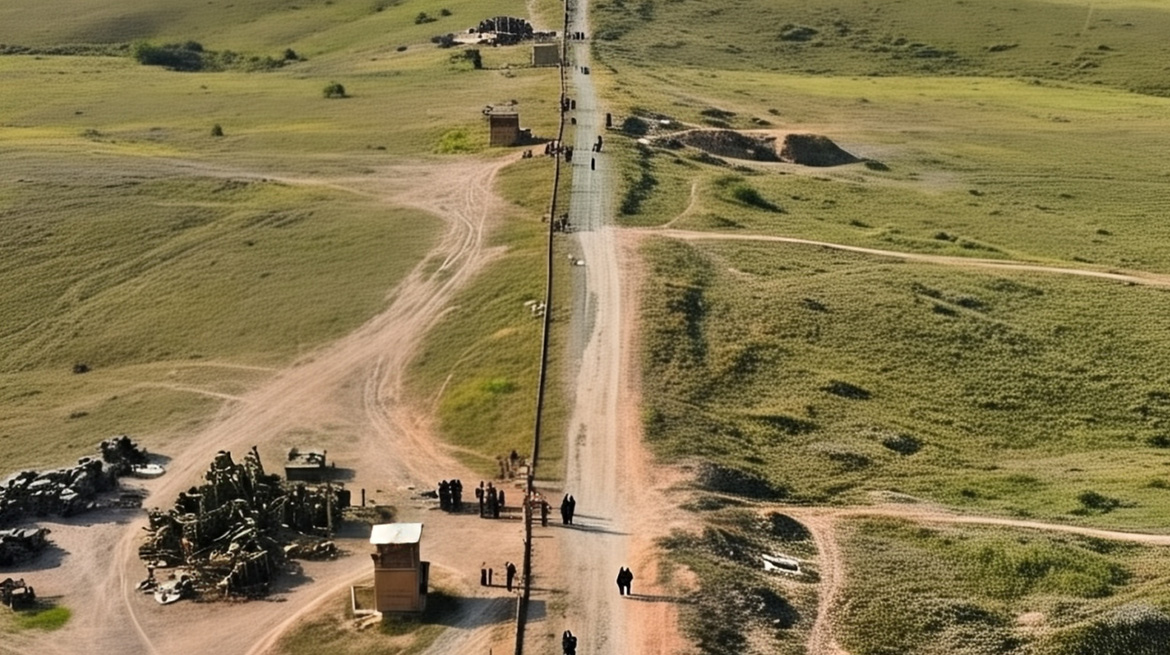In recent weeks, rising tensions along India’s northern borders have created a noticeable shift in the national mood, from anxious family discussions to mounting concern on social media. While national security remains the foremost concern for defence and policymakers, a quieter but significant issue is surfacing: growing psychological stress and anxiety among ordinary citizens.
For many, this is not unfamiliar. Residents of Jammu, Rajouri, Poonch, Tawang, and parts of Ladakh have long lived near the Line of Control (LoC) or Line of Actual Control (LAC). Border skirmishes, troop movements, and shelling have frequently disrupted their lives. School closures, displacements, and stalled livelihoods are recurring experiences. Yet, the emotional and psychological consequences remain largely overlooked.
What’s different now is how anxiety is spreading deeper into urban India. In the digital age, round-the-clock news and viral social media content, whether real, exaggerated, or fake, bring scenes of conflict to millions instantly. This fuels confusion, panic, and helplessness, especially among youth, the elderly, and families of armed forces personnel.
This growing phenomenon, often termed war-related anxiety, is becoming a public health concern. It calls for structured attention, clear communication, and accessible coping tools to help individuals maintain emotional resilience in uncertain times.
Understanding War Anxiety: A Silent Ripple Effect
War anxiety is not a clinical diagnosis but reflects a real and recognised emotional response to actual or perceived conflict threats. It can present as sleeplessness, panic attacks, poor concentration, irritability, or obsessive news checking. In some cases, it may develop into longer-term issues like generalised anxiety or depression.
A 2022 study of schoolchildren in Poonch District, Jammu & Kashmir, revealed psychological stress linked to ongoing armed conflict and cross-border firing. Teachers noted rising fear, lack of focus, and behavioural changes among students. Similarly, reports from the National Institute of Mental Health and Neurosciences (NIMHANS) confirm that perceived threats, such as troop movement or air raid sirens—can cause severe emotional distress even without direct violence.
Today, a student in Pune or a homemaker in Bhopal may experience anxiety, not from physical danger, but from the mind interpreting constant, distressing information as a threat, leading to heightened emotional strain.
Addressing the Crisis: What Can Individuals and Systems Do?
The first step is to recognise that this form of distress is real, not imagined. It’s a natural response to ongoing uncertainty. The next step is to offer people practical, accessible strategies to build and maintain mental resilience.
- Eat Smart and Stay Hydrated
- Prioritise 7–9 Hours of Sleep
Good sleep is essential for emotional balance. Poor or irregular sleep increases stress hormones and weakens the brain’s ability to manage anxiety. People should establish consistent bedtime routines, avoid late-night news, and create a calming sleep environment. Defence forces enforce strict sleep cycles to boost alertness and mental clarity. - Engage in Physical Activity
Physical activity helps lower cortisol (the stress hormone) and improves mood. Even a short daily walk, yoga, or light movement at home can be beneficial. The Indian Armed Forces and paramilitary units routinely practise yoga not just for fitness but also to manage combat stress. - Limit Social Media and News Consumption
Overexposure to distressing news and misinformation heightens anxiety. Authorities should amplify verified communication channels. Individuals must limit screen time, avoid speculation, and rely only on trusted news sources. The Ministry of Information & Broadcasting regularly issues guidelines for responsible media behaviour during sensitive situations—these should be widely promoted. - Stay Connected with Family and Community
Loneliness worsens anxiety. In border villages, panchayats and religious institutions have historically provided emotional support during emergencies. In urban settings, housing associations and WhatsApp groups can offer community updates and emotional reassurance. - Practice Breathing and Relaxation Techniques
Mindfulness-based practices such as deep breathing, progressive muscle relaxation (PMR), or simply observing one’s breath for five minutes daily are scientifically proven to reduce anxiety. These techniques are increasingly integrated into school health programs and disaster response counselling. - Seek Professional Support When Needed
India has made notable progress in mental health outreach. The National Tele Mental Health Programme (Tele-MANAS), led by the Ministry of Health and Family Welfare, provides free, confidential counselling in various regional languages. The helpline—dial 14416—has already received over 2 lakh calls, reflecting rising awareness and demand.Tele-MANAS works with state-level institutions for referrals and follow-ups. States like Madhya Pradesh, Gujarat, and Assam report increased use of these services, particularly during localised unrest or natural disasters, showing the program’s growing relevance and scalability.
What we eat significantly affects emotional health. Diets rich in whole grains, fruits, vegetables, nuts, and omega-3 fatty acids support better mood regulation. Conversely, excess caffeine, sugar, and ultra-processed foods can heighten anxiety. In rural border areas, especially during high-alert periods, Anganwadi centres and schools have played a vital role in ensuring nutritional continuity, especially when mobility is restricted.
A National Call for Calm and Compassion
In times of national challenge, emotional stability is just as vital as logistical readiness. Media houses, civil society groups, schools, workplaces, and Resident Welfare Associations (RWAs) must work together to ensure people feel supported and informed—rather than overwhelmed.
While India’s mental health infrastructure is growing, it remains in early stages. Public campaigns should treat mental hygiene with the same seriousness as physical health. The core messages can be simple: limit doom-scrolling, speak to someone you trust, stay active, sleep well, and call 14416 if you feel emotionally burdened.
Conclusion: Strengthening the Inner Frontline
India has shown time and again its ability to face adversity with strength and dignity. While trained institutions manage external threats, our role as citizens is to maintain internal stability. Mental well-being is no longer just a personal concern—it’s a collective responsibility.
We may not control geopolitics, but we can choose how we respond. By staying calm, staying connected, and supporting one another, we help build the nation’s emotional resilience. The war within is real—but it is one we can fight and win, together.




